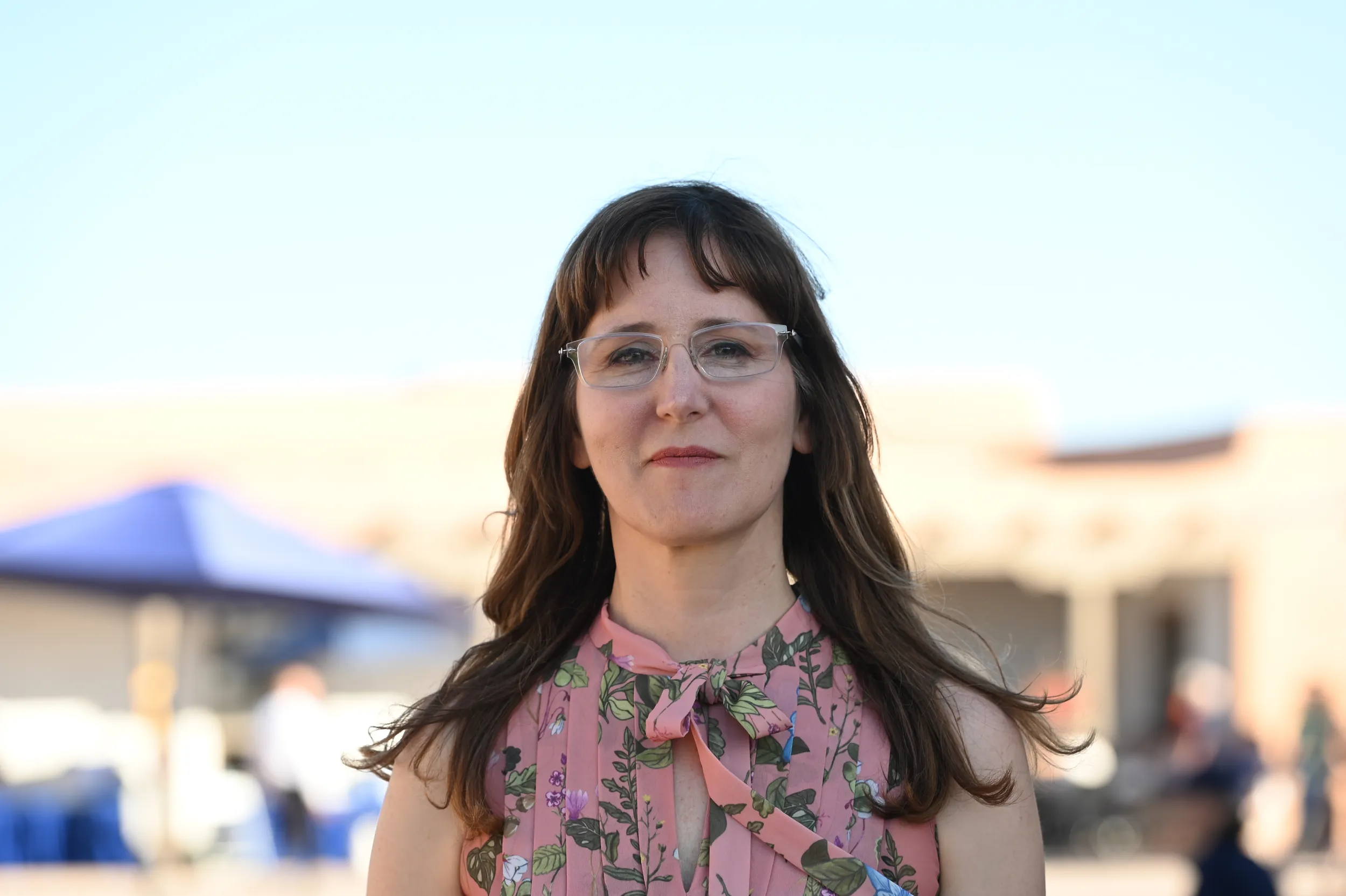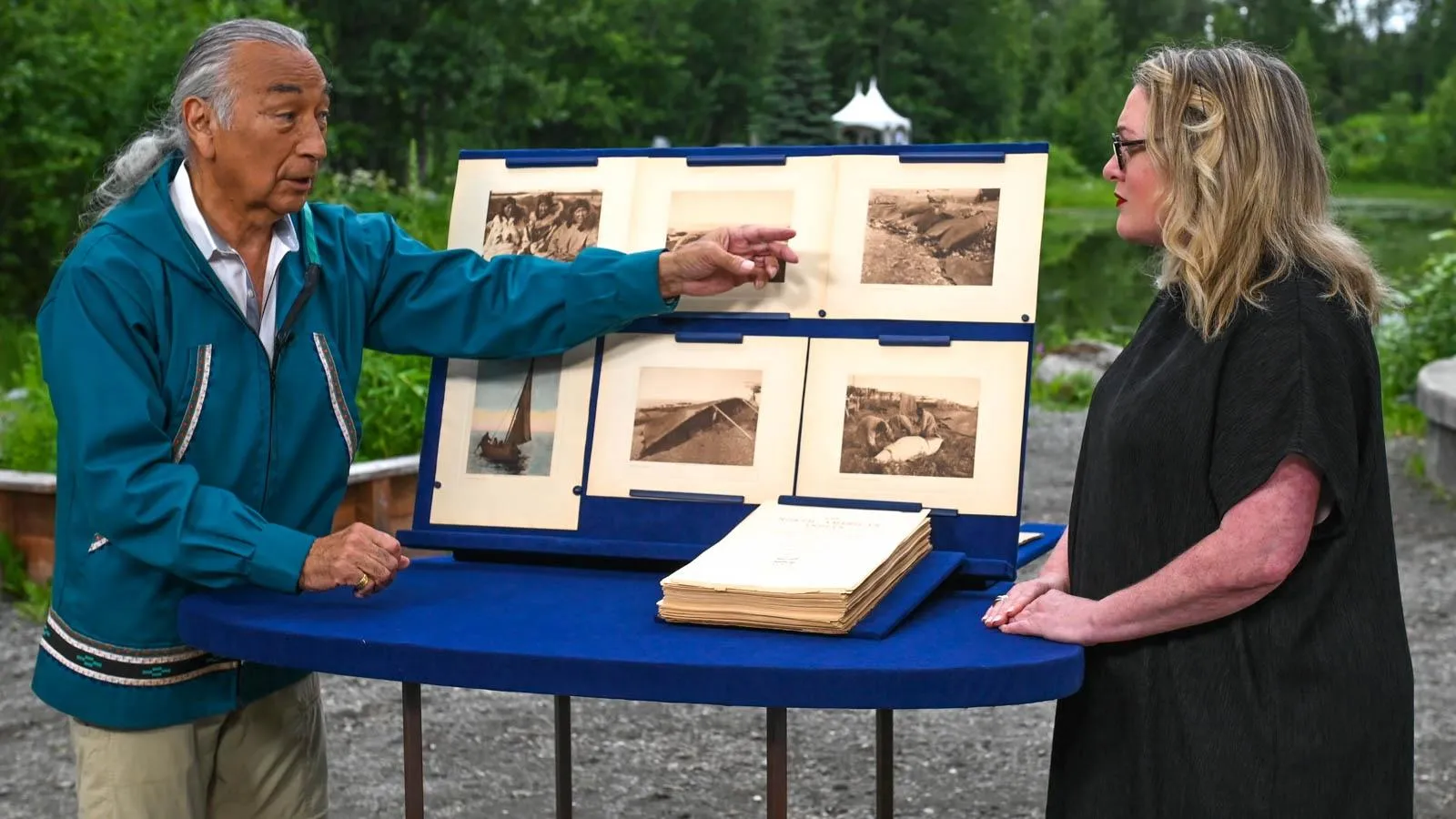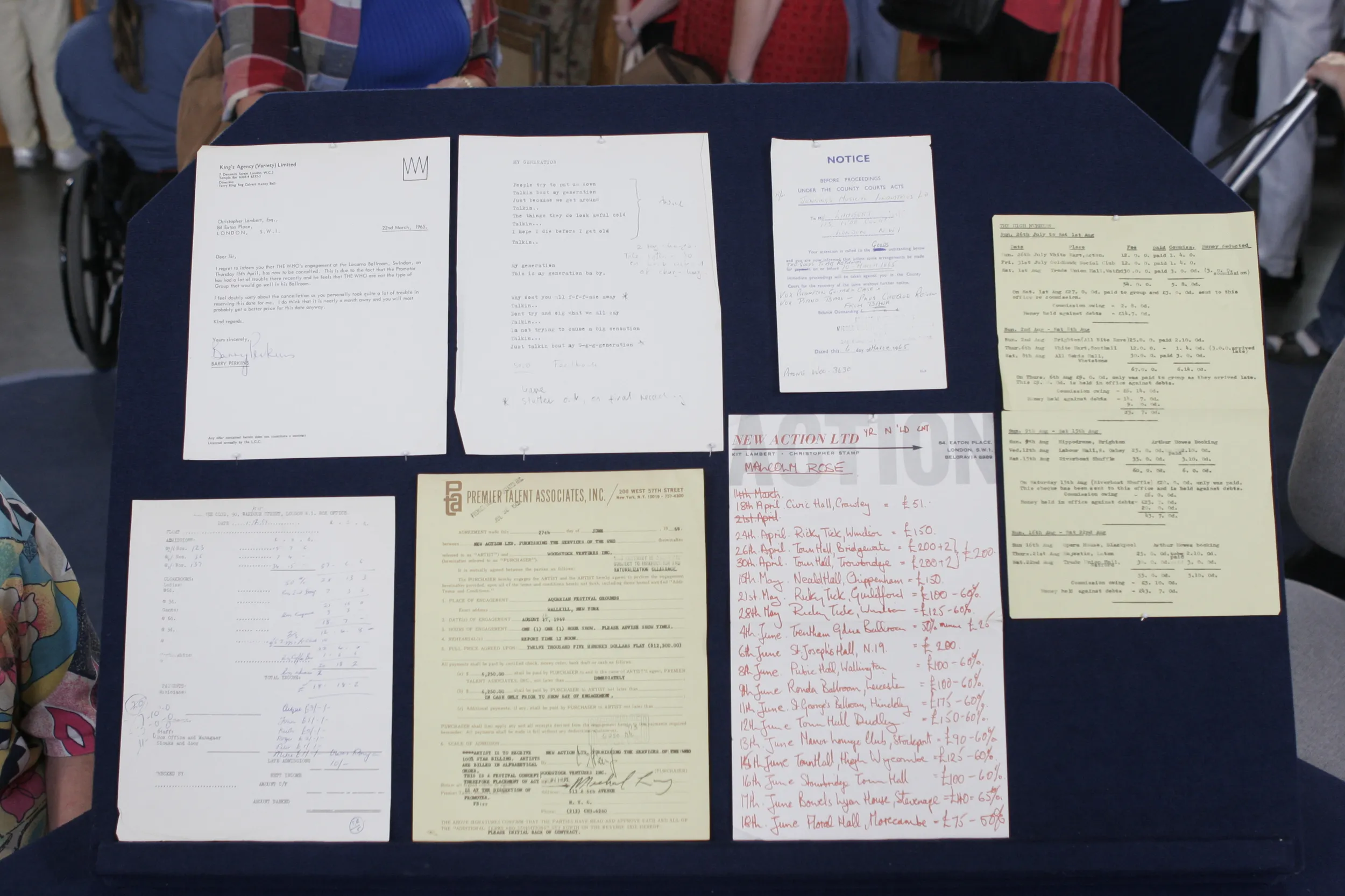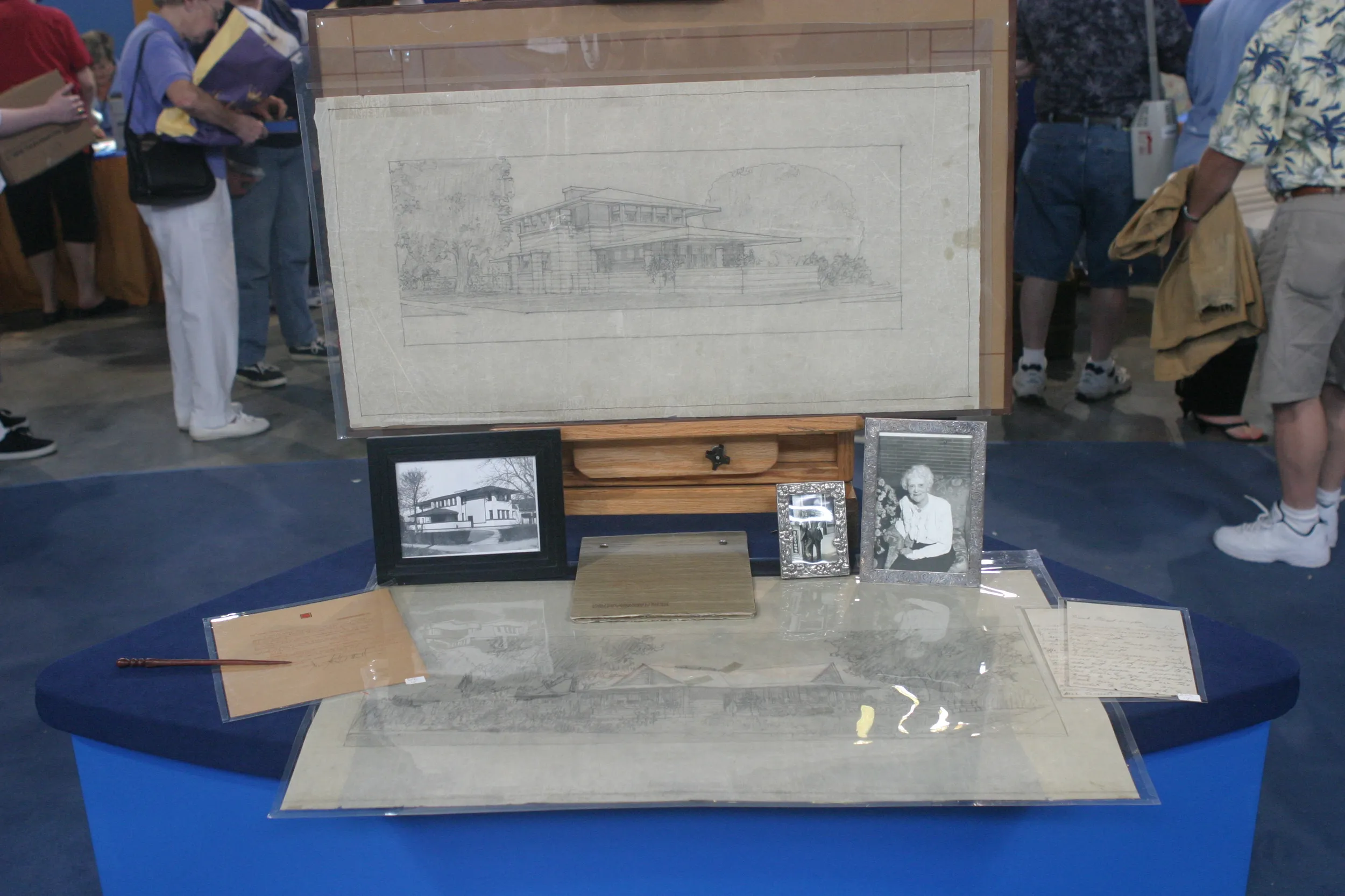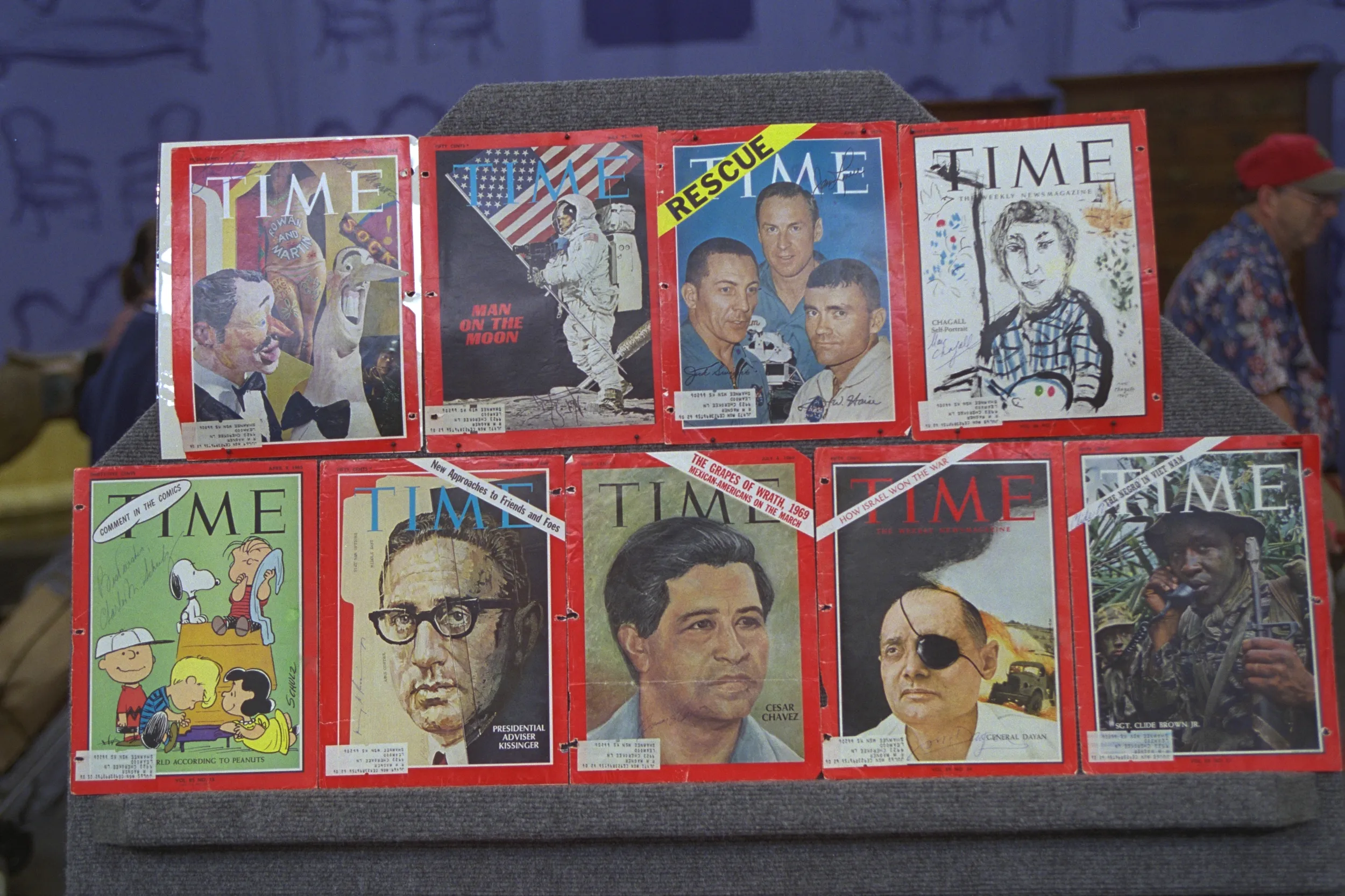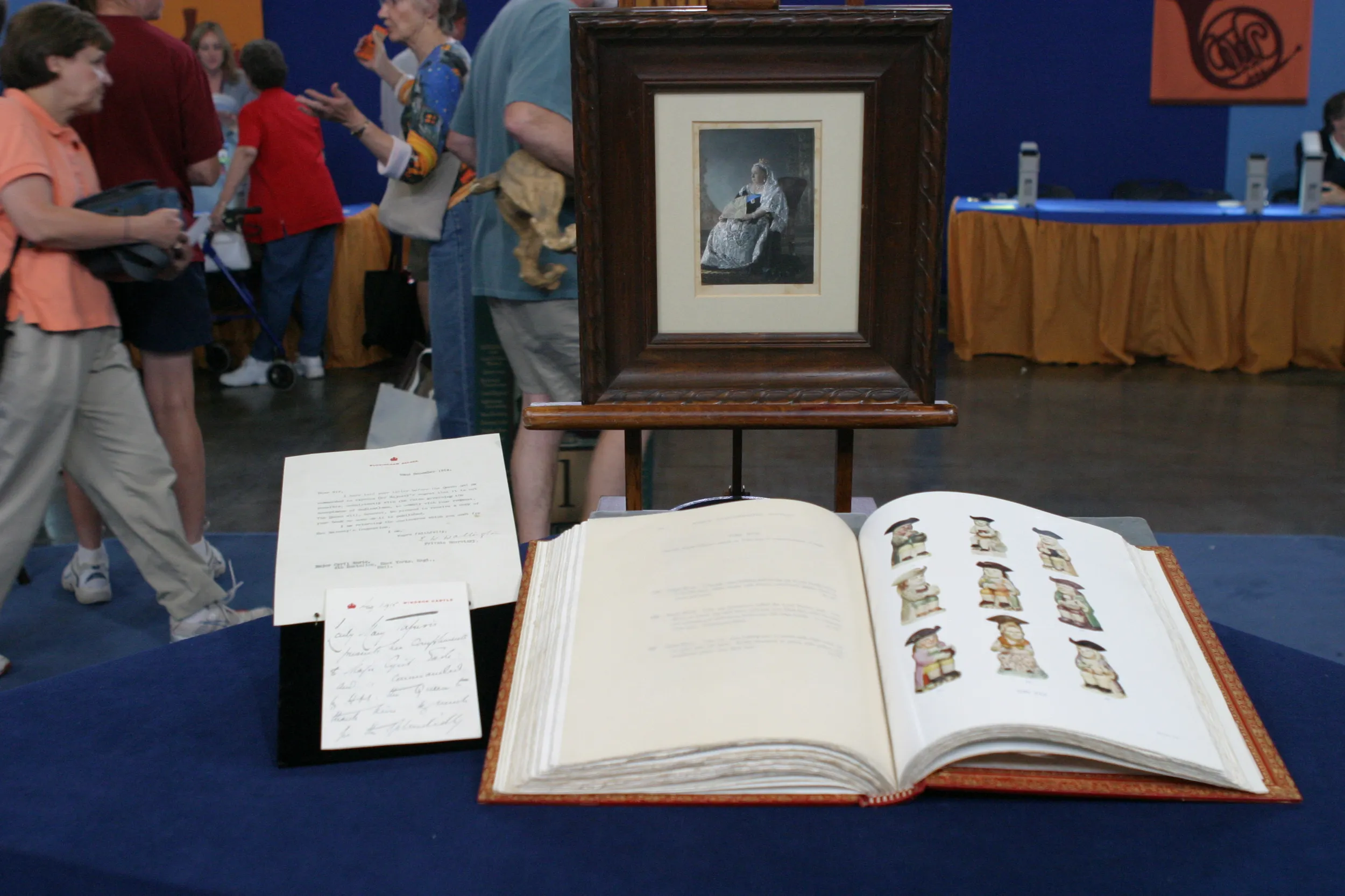GUEST: So these are maps of the Matanuska Colony Project that was one of the work projects following the Great Depression to get America back to work. They brought people up to try and populate and develop an economy in Anchorage and in the Matanuska Valley, which is about 40 miles north of Anchorage. These maps show each one of the families' parcels. My husband's parents were both colony kids. His mother came up from Minnesota and his father came up from Wisconsin. And we purchased the family's farm from his paternal grandmother in 1995. The farm is, uh, number 26 on the map.
APPRAISER: Excellent.
GUEST: And we still farm it as a family.
APPRAISER: How did you acquire the maps?
GUEST: The maps originally belonged to Senator Jay Kerttula, and he was also a colony kid. And when Senator Kerttula passed away, his daughter was cleaning out all of his things, and she hired my son to help go through stuff.
APPRAISER: Oh.
GUEST: And these maps were in there and she gave them to my son.
APPRAISER: Well, they're manuscript maps, and what's interesting is, you've got two different dates here. You've got the, the earlier one, 1929, which grades the land. You've got good land and fair land. And the colony was quite experimental, because Alaska was a territory. At the time, it was the Great Depression, and everyone was suffering. As part of the New Deal, I think it was about 200 families from the Midwest...
GUEST: Mm-hmm.
APPRAISER: ...were offered land up here, and they were invited to colonize Indigenous land.
GUEST: There was a, a Native population that, that lived and hunted.
APPRAISER: Okay.
GUEST: This was all Dena'ina land. Wasilla was the, uh, the name of the chief in, uh, in Wasilla, and that's what that community is named after. The names on here were homesteaders who had been there since, in, in the 1800s, prior to the colonists coming in. I'm not sure how the land was transferred to the homesteaders. In Indigenous culture, they don't own land. So that was one of the, the problems is, they couldn't prove that they loaned the, owned the land, because they didn't have title to it. But that's not how the Dena'ina culture or the Native cultures in Alaska work-- or anywhere, probably. And so it was a problem for the, the Native people, and, and it still is a, a point of controversy. We don't want to ignore the fact that it, the Dena'ina people were here first, and so...
APPRAISER: Mm-hmm.
GUEST: ...that needs to be recognized. This is actually probably the best farmland in Alaska, is in, is in this area. From what I understand, the 200 families that came up, about half of them left after the first couple of years. The project required that the people had to actually earn a living from the farm. And the problem was, there wasn't the population to actually be able to sell the produce. So, um, when World War II happened, there was a big military buildup in Anchorage and in Fairbanks, which brought a lot of, uh, military people up, and that created the economy that the farmers needed to actually start making money from the farms.
APPRAISER: Value-wise, these are completely unique. They're manuscript, they're engineering plans. And as a set, in a, in a retail setting, in a gallery, I could see selling the maps for $5,000.
GUEST: Wow.
APPRAISER: Thank you so much for bringing them in.
GUEST: Well, that's really interesting. Yeah, thank you, it's really good to learn a little bit more about them.
